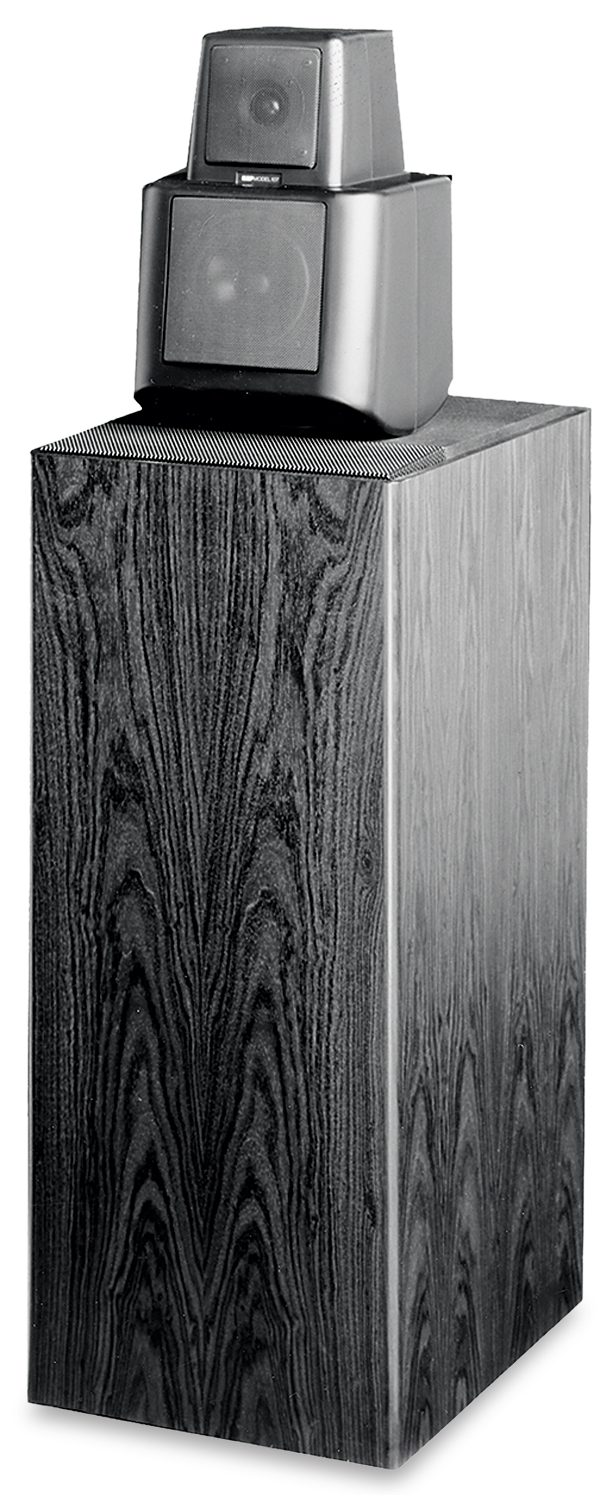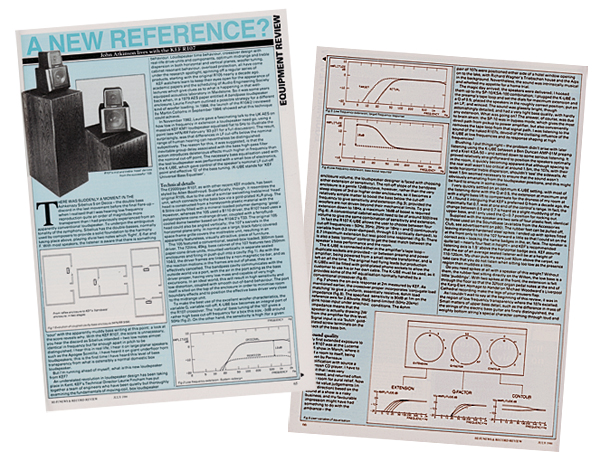A New Reference? Page 2
Supplied with the speaker are two sets of four plastic feet. The rubber feet can be pulled off, leaving standard hardened steel spikes. I ended up with spikes fitted at the front only, to tilt the R107 forward a little so that I could sit on the correct axis – looking the name badges in the, er, face. With two spikes at the front, the extension is felt through the floor so that the 32ft organ pedal notes at the end of the Karg-Elert Homage to Handel on Michael Woodward's Liverpool Cathedral recording make the legs of your trousers flap.
Clear Difference
And it was in the region of low frequency transparency where the R107s excelled. Small matters of upper bass detail, such as the difference in mass of the strings of the electric bass guitar are finely distinguished, the weighty bottom string's special character coming through loud and clear, with the emphasis not so much on 'loud' as on 'clear'. And the differences between similarly pitched sounds are also well resolved.

Take Stevie Ray Vaughan's blues 'Tin Pan Alley'. As Stevie gently solos on his Stratocaster, the drummer strokes threes on the ride cymbal, the bass player plunges deep into the lower reaches of the E string, and the bass drum thuds with an impact that is felt rather than heard. Even at extremely high playback levels, none of the instrumental sounds interferes with any other.
Take To The Floor
Overall, the differences between very loud and very quiet seemed almost exaggerated – the cat leapt off my lap in fright at the first entry of the 'big drum' on Kodo after the spacey shakuhachi intro. The extension itself only added weight when necessary, as in Papa Doo Run Run's cover of 'Let Him Run Wild' on CD where the 16ft bass synthesiser line could be followed without any undue emphasis or missing notes.
And I have never heard the 32Hz bass guitar C at the start of Joni Mitchell's 'Cotton Avenue' reproduced with such authority since I first heard it on the Apogee Scintilla. The rediscovery of the 16ft register in modern rock – the Peter Gabriel track 'Sledgehammer', for example – was a welcome trend that I hadn't been made aware of with smaller loudspeakers.
The KEF R105 had always thrown a wide and deep soundstage, but an aspect of the R107's extended but controlled low frequencies for which I was not prepared was the effect on imagery. Yes, that's right, it would appear that an accurately defined, delicately detailed, stereo image is enhanced by the reproduction of frequencies where no music lies. Rex Baldock used to refer to this as the 'floor sound', and it adds to the sense of space around bass instruments in particular. It certainly helped bring out the acoustic flavour of the hall in which the recording was made – you could 'hear the walls' of St John's, Smith Square, around the Dvorak Serenade on the HFN/RR test disc.
Queen Size
A further feature of the imagery, and one the adjustable bass roll-off point of the K-UBE made very easy to spot, was the way the R107's extension rendered mid and high frequency images 'small', or rather, natural in size, an aspect enhanced by the speaker's seamless transition from low bass through the midrange.

Kiri te Kanawa's voice on her first Chants d'Auvergne collection, for example, was the correct size with respect to the orchestral background. Raise the cut-off frequency and her voice image uncannily became more bloated.
I've concentrated on the things the R107s do right up to this point: where were they deficient? The treble was not as clean as I had hoped, there being some 'raggedness' present around 3-4kHz, as well as a slight plateau in this region, noticeable on pink noise. There was also a slight trace of 'cuppiness' in this upper midrange. On the whole, however, what sins the R107s did commit were of omission rather than commission, the general balance being neutral when compared with, say, the R104/2. The only negative aspect to bother me significantly was a loss of 'air' in the high treble, a lack of transparency. How much this is due to the straightforward op-amp electronics that are used in the K-UBE, it is impossible to say.
Question Of Tone
The truth of the saying that you can't get something for nothing was revealed by sweeping a very low frequency tone at what became obvious was too high a level. The LF equalisation means that the bass drivers are being worked hard to get the extension, with the result that some doubling, or distortion, was noticeable on pure tone, due to the drivers running out of displacement.
I should add that this was at very high levels and at very low frequencies. In fact KEF has carefully engineered the bass unit parameters to take advantage of the spectrum of real music, where it is very rare to get a combination of very high energy at very low frequencies, a point that became apparent in the research that led up to Laurie Fincham's AES presentation.
Conclusion
They used to say about loudspeakers that 'A good big 'un always beats a good small 'un'! The R107 is not only a good big 'un but the best speaker KEF has ever designed. It is also one of the best box speakers I have heard, combining the tight, extended bass of the Isobarik with a neutral tonal balance and stunningly precise stereo imagery.
It only departs from the (mythical) ideal loudspeaker in the treble, where it lacks transparency. There are speakers that are better in this respect – the Celestion SL600 or the Quad ESL-63, for example – but those models lack the bass extension and dynamics of the R107. The balance of subjective and objective parameters chosen for the R107 seem unique for a speaker in this price and performance class. One of the most important hi-fi products to come out of this country, it is indeed a high performance loudspeaker.


















































